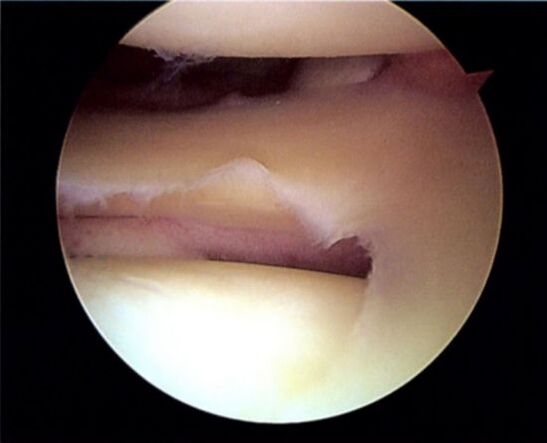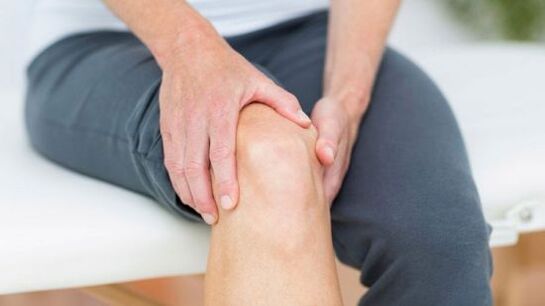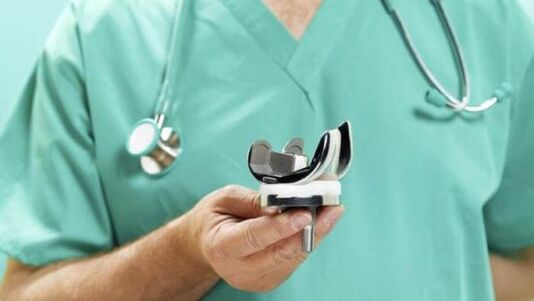The joints of the human body cope with daily stress, so they become sensitive to different types of destructive factors. Among joint diseases, osteoarthritis is common and affects both large and small joints. Osteoarthritis of the knee is a degenerative-dystrophic lesion of the knee, in which its motor activity is impaired. In the absence of proper treatment, the disease can lead to disability.
Since the disease provokes characteristic deformities in the joints, it was called deforming osteoarthritis of the knee, which rightly describes the typical characteristic of the pathology. The disease is chronic and is most often diagnosed in women, moreover, in those suffering from overweight and venous pathology of the lower extremities, but there may be other reasons. Due to age-related changes, it also appears in the elderly.
Osteoarthritis in young people can be caused by injuries. As a result of degenerative-dystrophic changes, cartilage softens, exfoliates and is covered with cracks of different depths. He then ceases to perform his function.
reason
Various causes lead to the appearance of deforming osteoarthritis of the knee. Traumatic factor is a common cause of occurrence. Post-traumatic osteoarthritis can develop as a result of a dislocation or fracture in the specified area, as well as a meniscus injury. Usually, gonarthrosis of the knee joint occurs in young people who are actively involved in sports, or in those people whose work is associated with increased mobility, lifting and carrying heavy loads.
Few people know that such an injury can also be the result of treatment, when the injury itself has already healed, but during prolonged immobilization of the limbs circulatory disorders have occurred in this area. Because of this, gonarthrosis appeared.
Increased physical activity in the knee is one of the main factors in the onset of the disease. Most often it affects athletes who have constant active loads on the knee. At a young age, osteoarthritis may not appear, usually rapid changes begin after cessation of physical activity.
There is also the risk of disease in those people who even in adulthood do not reduce the load on the joints. In such athletes the risk of fractures and dislocations increases, microtraumas appear. Therefore, already after forty years, doctors recommend that athletes reduce the load, go to training. Running and squats are best avoided, as these are the activities that burden the knee joint the most. Most often, a limb is affected and left-sided gonarthrosis or right-sided gonarthrosis occurs.
An essential factor in the development of osteoarthritis of the knee is the removal of the meniscus. If for some reason the menisci are removed, then in 90 percent of cases this leads to the appearance of osteoarthritis - the so-called knee loop occurs, during which the articular joints experience more friction than usual.

The problem of excess weight is also important for people with osteoarthritis. Excess body weight puts unnecessary pressure on the joints. As a result, it is not the cartilage itself that is damaged, but the meniscus. And with a combination of excess weight and varicose veins of the lower extremities, threatens to appear acute osteoarthritis.
Weak ligament apparatus in some patients is an innate feature, and sometimes the ligaments are affected due to other diseases. One way or another, weak ligaments provoke increased mobility in the joints, due to which the articular surfaces are significantly eroded. The effects of weak ligaments may not be felt for a long time until patients experience symptoms of true osteoarthritis.
Articular pathologies also lead to the development of the disease. The most common cause of osteoarthritis is arthritis - inflammation of the joint joints. With arthritis, typical signs are observed - deterioration in the composition of synovial fluid, pathological changes in cartilage, swelling, soft tissue redness. Even after cured osteoarthritis, chronic processes lead to the onset of osteoarthritis.
Violations of metabolic processes often lead to pathologies of the musculoskeletal system. Bones and joints lack the nutrients and minerals that are so necessary for tissue strength. In their absence, the bones and cartilaginous surfaces undergo destructive processes, therefore, even with a light load, primary arthrosis appears.
Symptoms
Osteoarthritis of the knee joint is manifested by a complex of features that are difficult to miss. The signs are not only felt in the first stage of pathology development, but already the second and third degree give distinct symptoms of osteoarthritis of the knee joint:
- pain- one of the main signs that does not appear immediately. An interesting fact is that with the development of osteoarthritis, the pain may not be felt even for months or years, until the disease worsens. Usually, the first signs of pain are discomfort during physical exertion, walking or running, but it also manifests when the meniscus is caught. With the second degree of osteoarthritis, the pain in the joints is felt more strongly, and with the third degree of development, painful sensations appear even at rest. Attacks worsen even after short walks without a strong load on the wrist, so patients try to save the knees;
- deformations- manifestations become more pronounced in the third stage of osteoarthritis development. The knee will retain its normal shape, but will look slightly swollen and edematous. When arthritis joins, the knee will become red, it will become hot and painful to the touch;
- cracklingwith osteoarthritis appears in the second and third stage of disease development. The croaking sounds are different from the healthy clicks that can sometimes be heard when the knee is extended and bent. In osteoarthritis, the symptoms are characterized by a dry, harsh sound that comes suddenly and is accompanied by pain;
- synovitis- the accumulation of a certain amount of fluid in the joint cavity. It's there and it's normal. But the accumulation of an excessive amount leads to the development of a cyst - Baker's most visible cyst, which can be defined in the unsteady position of the foot;
- limited mobility in the knee- a typical sign of pathology, as patients initially try to protect themselves from pain consciously, and in the late stage of osteoarthritis they can not direct the limb at all. In the third stage of development, deforming osteoarthritis of the knee joint (DOA) completely leads to loss of movement. Patients adjust to moving with bent legs while using support tools.
Stages of development
Osteoarthritis of the knee joint goes through three stages in its development.
With grade 1 osteoarthritis, the pain is insignificant and appears only with active physical exertion at the knee joint. Already in the first stage, fluid can accumulate in the cavity, which in the second and third is already a cyst. With progression, the pain occurs during movement, but quickly passes. From the outside, the deformity of the knee joint is invisible, so the diagnosis of osteoarthritis of the knee joint can be difficult.

With a second-degree disease, cartilage tissue damage is more significant. If you do a radiograph, then the bone growth phase is already visible in it. With each movement, a sudden sharp pain appears in the knee, but, returning to a comfortable position, the knee no longer hurts. In the second stage of DOA, you may hear a typical crack of osteoarthritis. With progression, problems with knee extension and flexion worsen. The deformation becomes visible from the outside.
Third-degree osteoarthritis of the knee joint is characterized by considerable thinning of cartilage tissue. Gradually, cartilage is consumed so much that bone is exposed in some areas. An x-ray image shows a significant amount of osteophytes - bone growths, salts that have appeared in the ankle cavity. From the outside, the changes are clearly visible and the patient is concerned about persistent pain. It is not difficult to make a diagnosis - a visual examination is enough and an X-ray examination is performed.
With the progression of this degree, osteoarthritis can lead to a complete loss of functionality. At any stage of pathology development, osteoarthritis of the knee joint can join.
Treatment
Coping with osteoarthritis of the knee is not easy, especially if the disease is advanced or if the inflammation has joined and arthritis has developed.
CONSERVATIVE
The group of most active drugs against osteoarthritis is the nonsteroidal anti-inflammatory drug. These are primarily cyclooxygenase-2 inhibitors, they can perfectly relieve inflammation, swelling and contribute to rapid healing.
These drugs have significant limitations, so they should not be used without a doctor's recommendation. For example, they are able to aggravate stomach ulcers, heart disease, urinary tract pathology. Non-steroidal anti-inflammatory drugs (NSAIDs) are also contraindicated during pregnancy.
The second group of agents are chondroprotectors that improve the characteristics of cartilage tissue. They are used for osteoarthritis to restore the proper structure of cartilage, because in the process of solution loses very important components - chondroitin and glucosamine. Therefore, almost all chondroprotectors contain both of these substances, but some preparations are an ingredient.
With the help of these drugs it is possible to help the patient in the first and second stage of disease development, but not in the third, when irreversible changes have occurred.
During conservative therapy, the doctor will also give recommendations for nutrition. If the patient or patient is overweight, it is imperative to follow a diet to normalize weight. How to strengthen a stable weight - will also tell the doctor. It is also not recommended to eat too much salt, but it is better to supplement the diet with calcium, vitamins and minerals. Jelly, jelly will be useful.
operational
The most common type of surgery for osteoarthritis is arthroscopy, but other interventions are performed. Treatment of osteoarthritis of the knee joint is usually performed in the second and third degree, when conservative therapy no longer helps.
If a minimally invasive intervention is needed, for example, when fluid accumulates in the knee joint, it is possible to do it with a puncture. A puncture is made in the knee joint cavity and excess fluid is pumped out. This method can diagnose a disease and at the same time apply it for treatment. Fluid is taken in the initial stage in a minimal amount, but this already significantly improves the well-being of patients. Then, after examining the biomaterial, another piece is removed and corticosteroids are injected into the joint cavity.

Arthroscopy is the most common. Through a small incision in the skin, several instruments are inserted that enable the examination of the wrist and the necessary manipulations in it. With the help of arthroscopy it is possible to remove tissue particles that have detached from the cartilage, but there is always the risk of secondary gonarthrosis appearing.
With severe injuries, the need arises to perform a periarticular osteotomy. This is a greater degree of impact on the joint, as a result of which it is slightly packed and placed at the desired angle. After surgery, rehabilitation lasts longer, but the effect lasts longer.
Significant destruction of articular elements leads to complete immobilization of the limbs. The connection does not perform its function, which means that it must be replaced and an operation performed. Knee endoprosthesis is a costly operation, but only it makes it possible to return the patient to movement in the limb. Various knee prostheses are installed - plastic, ceramic or metal. These are durable structures that allow you to forget about the problem for decades.
Physiotherapy
Physiotherapy methods can be used only when the acute period has passed and the patient is in recovery.
Methods actively used include:
- ozone therapy- exposure to the affected node with ozone, and the substance can be injected or used as an external treatment. This type of help for patients is very effective, so it is often used in the treatment of various pathologies, including osteoarthritis. The treatment makes it possible to activate blood circulation in the problem area, to achieve an anti-inflammatory and analgesic effect. At the same time, treatment with glucocorticoids is performed;
- Chinese therapy- the treatment is performed with the help of a special group of exercises. The load is formed taking into account individual data, and during the performance of exercises, special simulators are used that strengthen the joints. The difference between kinesiotherapy exercises and physiotherapy is the active effect not only on osteoarthritis of the knee but also on the whole body as a whole.
Apply not only ozone therapy and kinesiotherapy, but also physical therapy. The author's exercises methods for eliminating knee osteoarthritis give good results. During and after the exercises, you may need to wear a special knee brace - an orthosis, to strengthen the right or left knee joint.


















